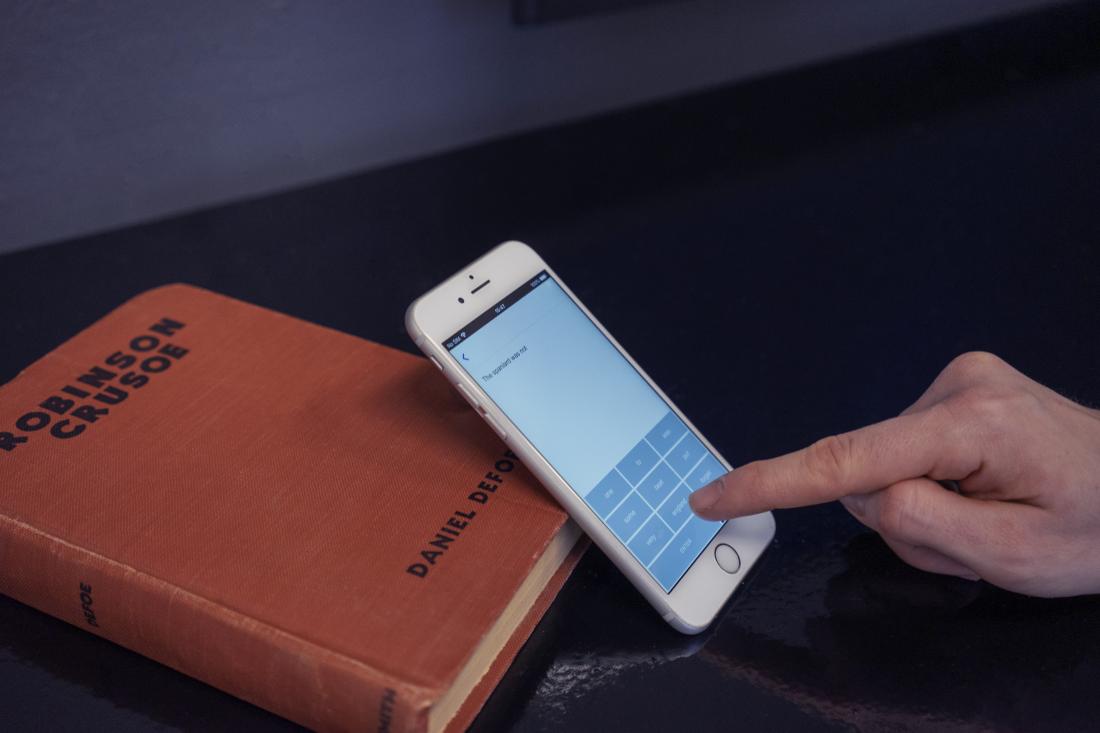Liliana Farber: Proximal, Distal, Adrift
February 28 – April 18, 2020
Opening Reception: Friday, February 28, 6 - 8 pm
Virtual Curator Tour: April 9th, at 5:30 pm - check it out here!
Proximal, Distal, Adrift, is an exhibition of new work by Liliana Farber that is comprised of autonomous software, performance documentation, video, mobile applications, prints, and text. Farber looks to cartographic histories, storytelling, and machine learning algorithms to develop novel understandings of how contemporary culture engages with data at scales that are human, global, and computational. Proximal, Distal, Adrift inquires: How does internet infrastructure perform and for whom? How does navigation online remain personal (human) while happening through biased algorithmic networks and operating on unknown servers? How do information technologies insinuate trust and validate truth?
The platforms and infrastructures that shape the media landscape are also the site of Farber’s artistic practice and output. She uses Google Earth and machine learning networks as sources for navigation and manipulation in the video work Anonymous and the digital print series Terram in Aspectu. A custom smartphone application, Blue Vessel, invites visitors to write anonymous stories by selecting words from Robinson Crusoe. And an autonomous server, located at 1708, will send signals to random servers across the planet –adrift across fiber optic cables– awaiting response to be logged by a thermal printer throughout the exhibitions duration. Adrift is a performance between machines taking place in the underground channels of internet infrastructure. Proximal, Distal, Adrift unveils the geopolitics, colonialism, and capitalist endeavors that big data and machine intelligence covertly embrace.
Proximal, Distal, Adrift does not eschew the human subject; the title references the very human body that is affected by these technologies. Proximal and distal in anatomy refer to the distance of something to the center of the body –is it nearer or farther? Adrift is unattached and unsupervised, leaving all three parts in a flux of relative location and connection.
As part of Proximal, Distal, Adrift, 1708 will co-host with A.I.R. Gallery (Brooklyn, NY) a satellite session of The Unforgettables Reading/Working Group on Saturday April 18, 11am – 2pm. This will be co-led by Roxana Fabius and Liliana Farber. The Unforgettables is a series of monthly meetings held at the A.I.R. space since 2016, initiated by artist Ofri Cnaani and A.I.R. Executive Director Roxana Fabius. This group, formed by readers/workers from several disciplines and walks of life, brings to the front a combination of texts, artworks, and films. Every month the group looks at historic feminist and queer manifestos, science fiction, new feminist fiction writings, and theory pieces that help to imagine a future where no one is forgotten. Selected texts for the session at 1708 will be disseminated prior to the event. If you are interested in attending and for more information, please contact Park Myers at pmyers@1708gallery.org.
Liliana Farber is an Israeli/ Uruguayan new media artist currently living and working in New York. She received an MFA from Parsons School of Design, The New School. Previously she completed the Postgraduate Fine Art Studies at the Hamidrasha School of Art, Beit Berl, and holds a B.A in Graphic Design from O.R.T University in Uruguay. Farber has had solo shows at Arebyte Gallery, London; Dodecá Center, Marte UpMarket gallery, and at the Education and Culture Ministry in Montevideo, Uruguay. She has participated in numerous collective shows at Raw Art Gallery, Tel Aviv; Glassbox Art Space, Paris; Ars Electronica Festival, Austria; WRO Media Art Biennale, Poland; FILE Festival, Brazil; The National Museum of Visual Arts, Uruguay; Katonah Museum of Art, NY; MECA Mediterráneo Centro Artístico, Spain; and National Museum of Fine Arts, Chile. She received the Network Culture Award from the Stuttgarter Filmwinter Festival, Germany; The Art and Technology Award from the Montevideo City Hall, Uruguay; and the Prize for Excellence in Art from the Ministry of Immigration, Israel.
Special Thanks to True Harrigan and Luck Stone, and Brewster Rawls.

